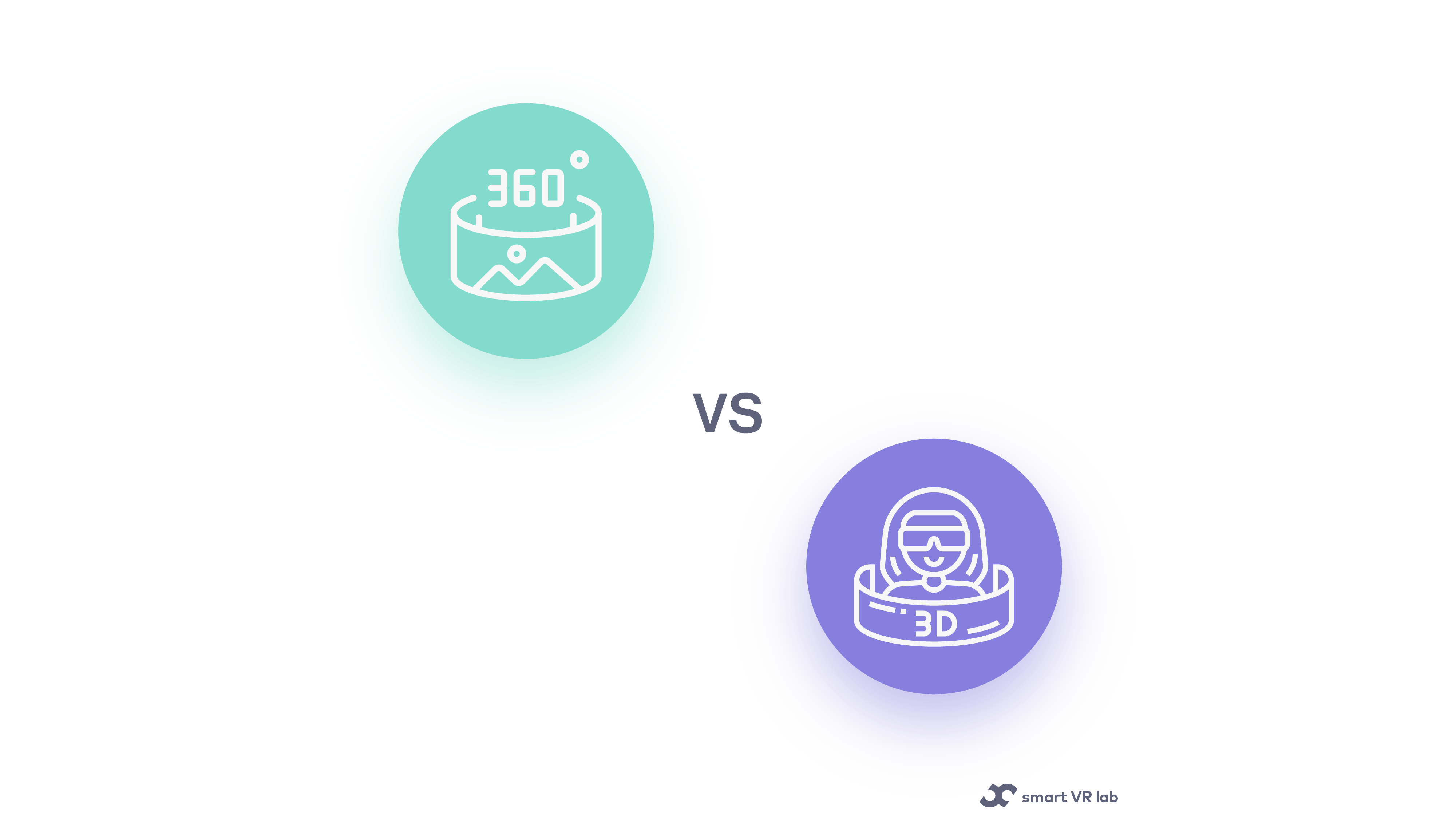Have you ever wondered what the differences between 360° videos and 3D VR are?
Can they possibly be manipulated? And how do they differ in production? This blog breaks it all down.
Virtual Reality content is Virtual Reality content. Right? Well, not quite. There are two main categories of content: 360° degree video and 3D VR. There a several differences between the two:
- Production: filmmaking vs animation
- Consumption: 3DoF vs 6DoF
- Experience: static approach vs. mobile approach
You will soon find out that 360 degree videos and 3D VR are very different indeed – their one connector is that they can both be consumed via VR:
Production
Let’s dive right into it with the arguably most obvious difference: the production of the VR materials. Shoot your shot with 360 video: In most ways its production is similar to typical filmmaking.
Here you see an example of a raw image from a Samsung Gear 360 with two lenses:
As you shoot the video with different lenses, it then needs to be merged into a single 360 degree spherical view. This process, called ‘stitching’, results in an image that looks like this:
So far so good for 360 degree video. 3D animation is a completely different story, though – in fact, it is much more similar to 3D game development.
Instead of it being filmed, it is computer generated by the standard software used for game production such as Unity and Unreal Engine.
Therefore, in 360° video, you have real-world live-action video production and in 3D VR you develop a digital environment – the difference is clear.
Consumption
When it comes to consuming the produced content, 3D offers a more immersive experience than 360* video. In 360° degree videos, you cannot change your viewing perspective or angle, you are bound to the limits of the film.
So, for example, you can not look around a corner if you move your head, as your environment is limited to the confines of the video.
But in 3D VR, viewing from a different perspective is possible and enables you to see what’s around you. Just like in real life, you can tilt your head, move and peek around the corner. Unlike in 360° video, where moving your head will not affect your viewing perspective, in 3D VR you can change your perspective and your position.
For 3D VR, creators can use 6 DoF (degrees of freedom) whereby 360° video can only be used with 3DoF, making for a vastly different consumer experience. Apart from that, what VR device you use can also impact whether you can use the full 6DoF, so keep that in mind when starting out and buying your headsets. For more information on this difference in content and devices, read this article: ‘What is the difference between 3DoF and 6DoF’.
Experience
In Virtual Reality, 3D and 360° videos differ in ways that affect the overall VR experience.
On the one hand, 360° videos are simpler in the way that they offer the capability to consume content without taking part in what is happening – the experience is limited by the filmmaker’s perspective, the events are always experienced the same, since you cannot change the sequence freely. However, the video itself is much more photorealistic than animation.
On the other hand, 3D videos enable the user to move around, explore the virtual world and manipulate objects inside it. This opens the possibility for the immersed user to create new and unique experiences.
360° video or 3D? Or both?
According to the production, consumption and experience of both the 3D VR and 360° degree videos, it is obvious that 3D is fully interactive. In most cases, 360° degree videos are not interactive, though they can be.
For example, with the Smart VR Lab platform you can easily create your own 360° interactive storylines and add tools such as multiple choice questionnaires. This interactive form of 360° degree videos can be very useful, especially for businesses. With the help of Smart VR Lab, a business can create its own 360° degree interactive video to train its staff and to enhance the training experience by refining its training models. See how businesses use VR Training here.
In the end, 360 degree video and 3D VR differ from one another in many ways, yet one thing is clear: Both offer great benefits and are worth considering in their own right.
Smart VR Lab develops and produces training content for businesses across multiple industries. To transform the way your business trains its staff, simply contact Smart VR Lab for a demo and set up a meeting with our team.
If you have questions on anything related to VR, you can always send us a mail to info@smartvrlab.nl
Request a VRee trial
For a free 4-week trial, demo or simply more information,please leave your email.

